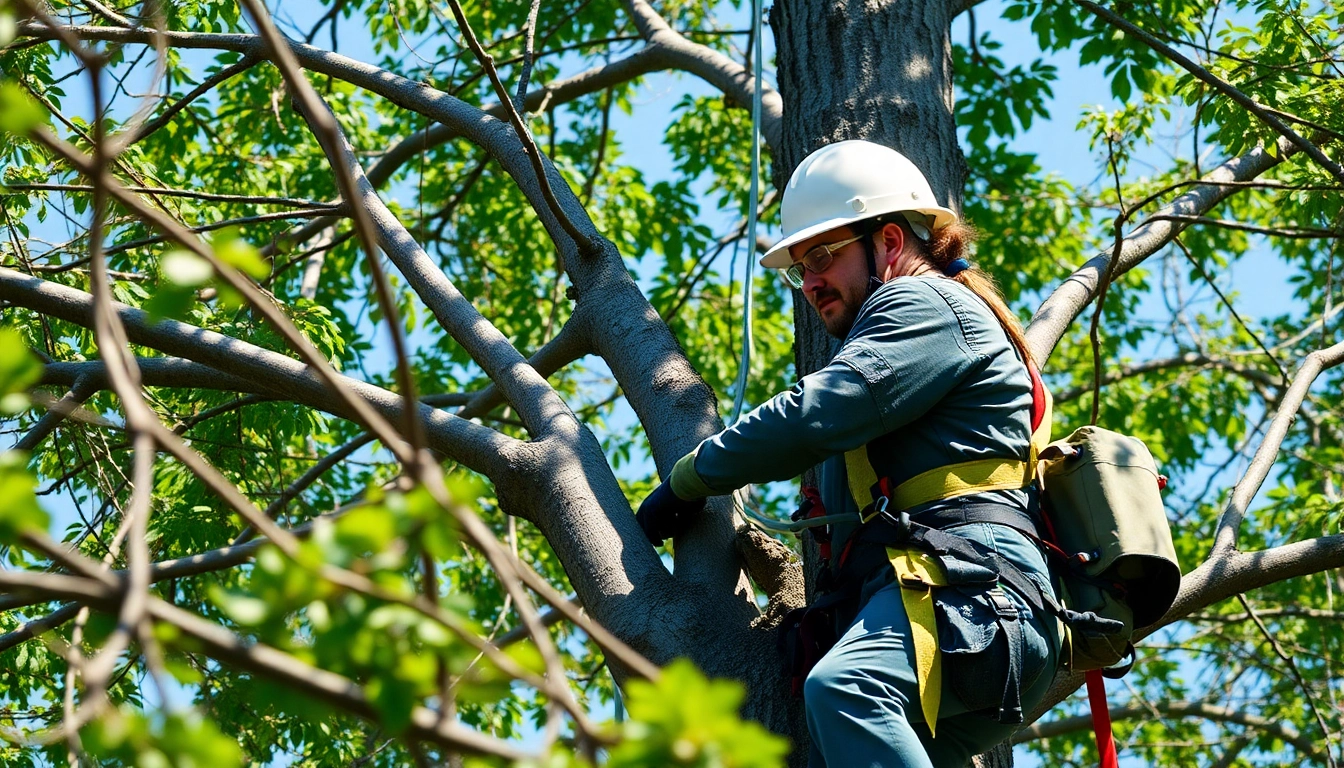Understanding Emergency Tree Service
In the world of property management and personal safety, understanding the nuances of emergency tree service is crucial. Trees, while often seen as a beautiful part of landscaping, can become dangerous liabilities under certain conditions. This guide aims to illuminate the complexities of emergency tree services, from identifying the need for immediate action to how to choose the right professionals for your situation.
What Constitutes Emergency Tree Services?
Emergency tree services are specialized services that respond to urgent situations where trees pose a danger to people, structures, or other trees. Unlike routine tree care that involves pruning, planting, or removal under normal conditions, emergency services are needed when unforeseen factors create an immediate risk. For instance, a tree that has been struck by lightning or has fallen due to high winds requires prompt intervention to mitigate damage and ensure safety.
Common Situations Requiring Immediate Action
There are several situations in which emergency tree services are necessary:
- Storm Damage: High winds, heavy rain, and snow can weaken trees, causing branches to break or trees to fall.
- Tree Disease: An unhealthy tree can become brittle, making it prone to sudden collapse.
- Insect Infestation: Certain pests can cause severe structural damage to a tree, necessitating urgent removal.
- Construction Incidents: Trees may need to be immediately removed or trimmed to facilitate construction activities.
How Emergency Tree Services Protect Your Property
Employing emergency tree services not only protects your property but also enhances safety for the occupants. By quickly removing hazardous trees or branches, these services prevent potential injuries from falling limbs or collapsing trees. Furthermore, timely interventions can save you from extensive property damage, providing peace of mind during tumultuous weather or unexpected tree failures.
When to Call for Emergency Tree Service
Knowing when to call for emergency tree service can mean the difference between a minor inconvenience and a major disaster. Awareness of the signs and understanding the urgency of the situation is vital for every homeowner or property manager.
Identifying Warning Signs of Tree Damage
Several warning signs indicate that a tree may need immediate attention. These include:
- Cracks or Splits: Visible damage to the trunk or large branches can indicate structural failure.
- Leaning Trees: If a tree is leaning excessively, it is often in danger of collapse.
- Dying Leaves: An unusual number of dead or drooping leaves can signal a health issue that may compromise the tree’s stability.
- Fungi Growth: Presence of mushrooms at the base or on the trunk may suggest decay within the tree.
The Importance of Timely Intervention
Timely intervention is critical in forestry. Delayed reactions can lead to extensive complications, including costly property damage and potential injuries. For instance, a single day of heavy winds can exacerbate a tree’s already weakened condition, making it more likely to fall. Working quickly with emergency services ensures that risks are minimized and your property is shielded from unforeseen disasters.
Catalog of Emergencies: Storms, Pests, and More
Different emergencies necessitate different responses. Storms, for instance, can cause widespread destruction, toppling trees and causing structural damage to your home or property. Pests like the Emerald Ash Borer can silently kill trees, rendering them hazardous long before they show visible indicators of distress. Identifying these emergencies quickly and knowing when to call for assistance is essential to maintaining a safe environment.
Choosing the Right Emergency Tree Service Provider
Not all emergency tree service providers are created equal. Choosing the right provider can ensure that the job is done safely and effectively, minimizing further damage and promoting a healthier landscape.
Essential Qualifications and Certifications
When selecting an emergency tree service, it’s essential to verify their qualifications. Look for providers with certifications from reputable organizations, such as the International Society of Arboriculture (ISA) or the Tree Care Industry Association (TCIA). These certifications indicate that the service adheres to industry standards and has trained professionals capable of managing the complexities of tree care and removal.
What to Look for in a Reputable Service
Beyond qualifications, ensure that your chosen service meets the following criteria:
- Insurance: A reputable emergency tree service should have liability and worker’s compensation insurance to protect you from potential claims should an accident occur.
- Experience: An established company with a proven track record of handling emergencies can navigate challenging situations more effectively.
- Transparency: Providers should be willing to explain their methods, pricing, and the necessary steps to handle your emergency.
Reviews and Testimonials: Evaluating Trustworthiness
Before making a final decision, review customer feedback on platforms such as Google Reviews or Yelp. Testimonials can provide insight into the company’s reliability and professionalism. Pay attention to comments regarding punctuality, effectiveness, and the overall experience, as these factors can heavily influence your satisfaction with the service provided.
Best Practices for Emergency Tree Service Preparation
Preparation is key when it comes to emergency tree services. Being proactive allows you to mitigate risks and ensure that you are ready to respond effectively in case of a tree-related emergency.
Maintaining Your Landscape to Prevent Emergencies
A well-maintained landscape can significantly reduce the risk of emergencies. Regularly inspect trees for signs of damage and disease. Pruning dead branches and ensuring proper spacing can also prevent potential hazards. Additionally, consider planting more resilient tree species if you live in an area prone to severe weather conditions.
Creating an Emergency Plan for Tree Management
Establishing an emergency plan for your home should include protocols for what to do in the case of a tree emergency. Familiarize your family with the plan, detailing who to call, how to evacuate if a tree falls, and where to go for safety. Regular drills can help reinforce these procedures, ensuring family members know how to react under stress.
Educating Your Family on Tree Safety
A key component of tree management is educating those in your home about tree safety. Discuss potential dangers posed by trees and teach your family how to identify warning signs. Encouraging open communication ensures that if anyone notices a potential issue, they can report it promptly.
Post-Service Actions After Emergency Tree Removal
Once your emergency tree service has concluded their work, there are several important steps to take to ensure your property remains safe and healthy.
How to Assess the Site After Service Completion
After a tree has been removed, assess the area for any potential hazards, such as exposed roots or debris left behind. An empty site can present new risks; understanding how to navigate this space safely is crucial. Make sure that any remaining tree stumps are secure and that no additional damage has occurred during removal.
Restoration Tips for Your Landscape
Restoring your landscape after tree removal involves several considerations. Fill in any holes left by the tree roots and consider replanting grass or other plants to restore the aesthetic appeal. Depending on the size of the tree, you might also want to consider planting a replacement tree, choosing species that are better suited for your environment.
Understanding Follow-up Care and Tree Health
Finally, understanding follow-up care is essential to maintaining the health of your landscape. Regular inspection and proper watering practices can ensure that both new and remaining trees remain healthy. Consulting with tree care professionals can also provide you with tailored advice on how to keep your landscape flourishing in the wake of any emergency.



